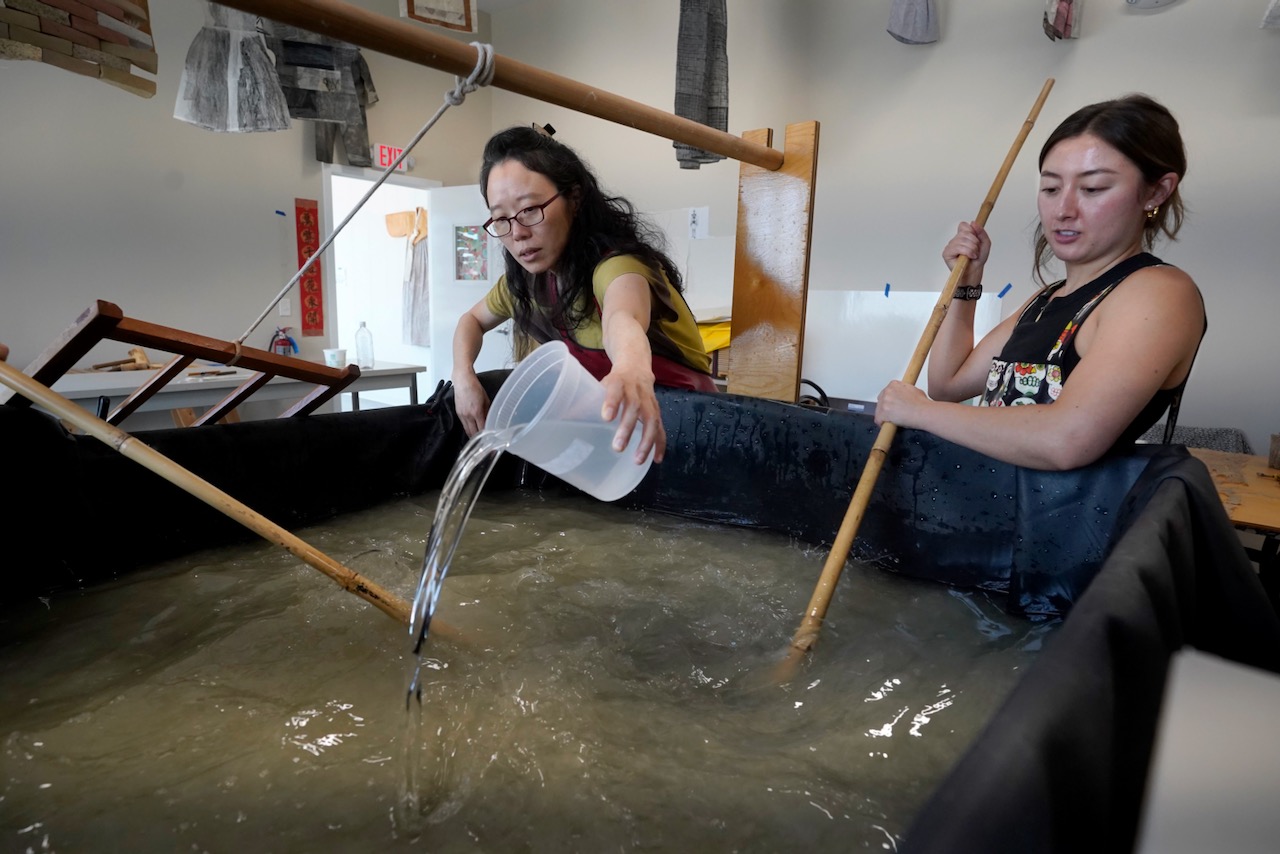Korean American artist and papermaker Aimee Lee expected to become a professional violinist. But in art history class at Oberlin, studying Chinese landscapes painted on Korean paper, she had a “lightbulb moment.”
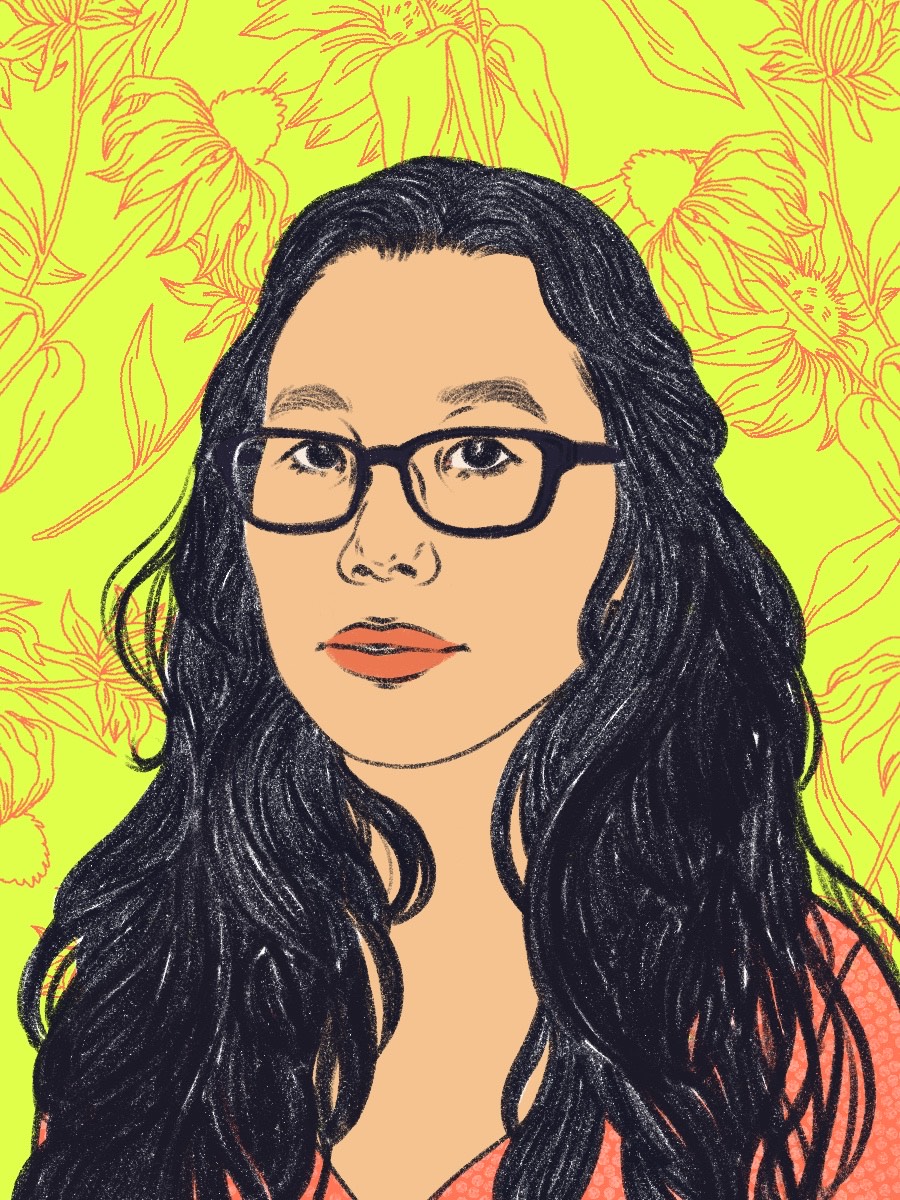
“Why am I studying Chinese art if I don’t know anything about Korean art?” she realized. “How can I study Korean art if I had rejected my Koreanness?”
Until then, the 19-year-old Lee had insisted on speaking English to her parents. But she decided to speak Korean again, and traveled to Korea to refresh her skills. On subsequent travels, she encountered the artisans behind Korean paper, or hanji, hand-made from the bark of the paper mulberry plant.
Lee’s “lightbulb moment” led her to continue studying visual art, and she fell in love with bookmaking and papermaking. When she discovered there was very little research about hanji in English, she applied for her first Fulbright—that Fulbright year in Korea “made it very clear that this would be my life path,” she says.
It was difficult to get training in a discipline typically performed by men in rural communities. But Lee says once she found a teacher–after six months of searching!–“all these doors that felt slammed in my face started to open.” She studied with a basketmaker, a natural dyer, a calligrapher–artists who worked with the hanji she was learning to make.
Lee developed lectures and workshops to share what she’d learned. She worked with the Morgan Conservatory in Cleveland to build the first North American hanji studio. Rather than big cities like New York that “already had so much,” she felt she could make a greater impact in the Midwest. She published Hanji Unfurled, the first English-language book about hanji. She now has dozens of residencies, exhibitions, publications, and awards to her name. But she was still surprised to hear a student say, “You’ve influenced every Asian American papermaker.”
“When I grew up, it was totally uncool to do work based on your lineage,” says Lee. “It’s so heartening to see that it’s now a point of pride.”
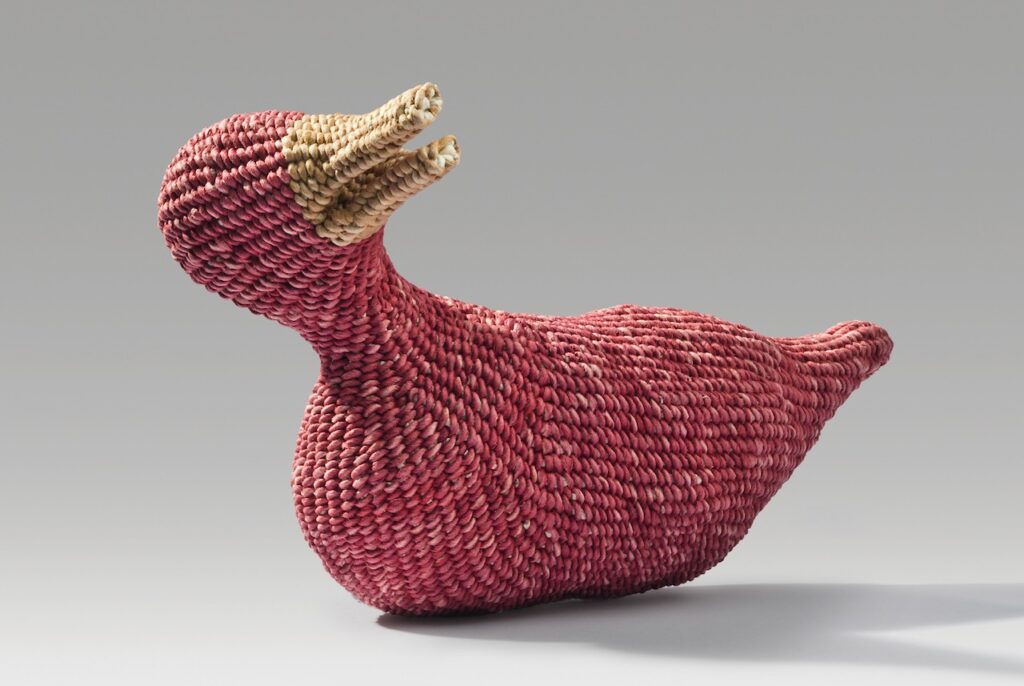

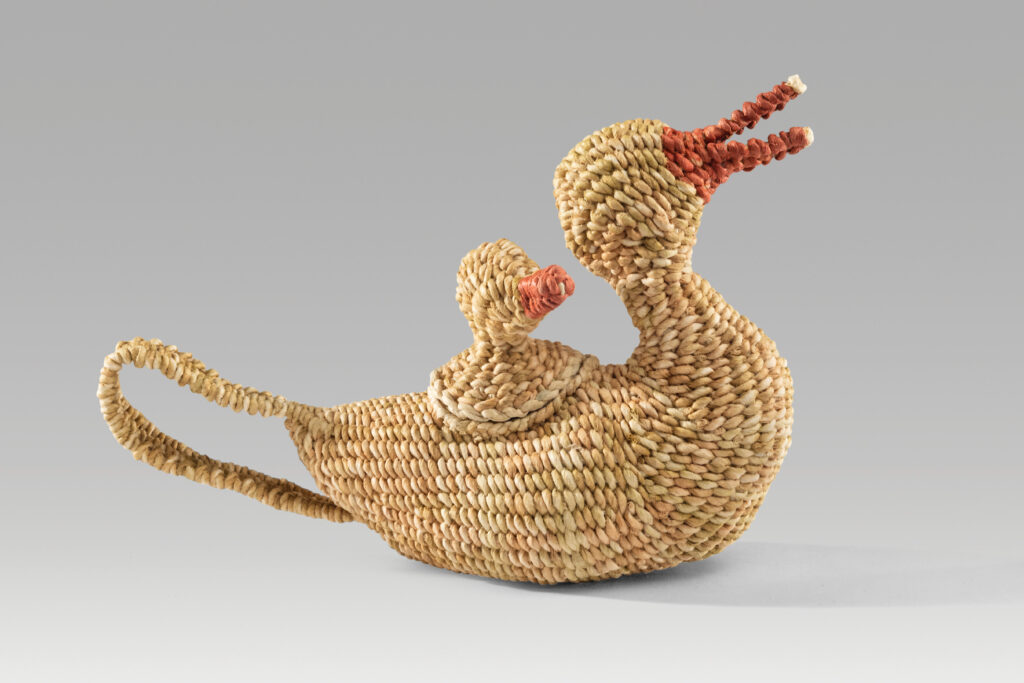
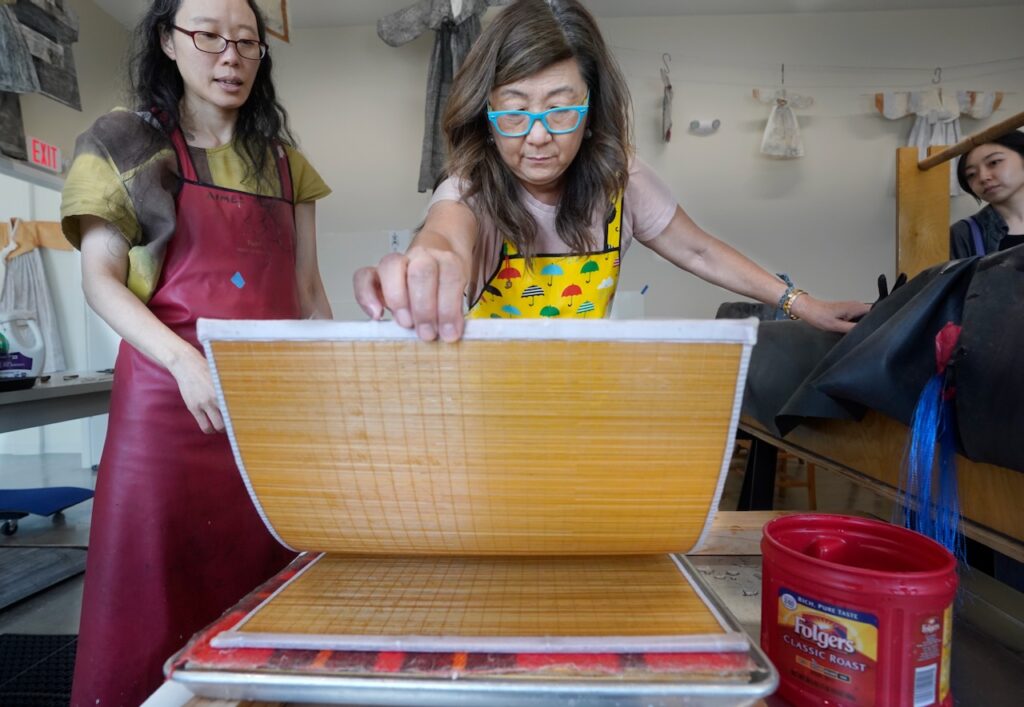
Lee creates artist books, woven baskets, animals, even garments with hanji. Some she buys from Korean papermakers, whom she is proud to support. Some she makes herself–a laborious process of cultivating the plants, stripping away layers of bark, boiling, beating by hand, pressing, and drying… before letting the paper rest for a year or more. She uses plants native to her Ohio home, such as milkweed, which creates a “super-hybrid hanji very reflective of [her Korean-American] identity.”
Lee says the Midwest Culture Bearers Award has made her feel “seen for the heart of my work… in a way that the contemporary art world isn’t always equipped to understand.” The connection between artist, art, and the community around both is crucial for Lee. “Connecting my heritage from my family line with my place of birth with my skills and interests is how I embody a living tradition that will always feed my studio and community practice,” she says. “I think that connection is why art is so powerful.”
Aimee Lee is a 2024 recipient of the Midwest Culture Bearers Award, which celebrates and financially supports the work of Midwest culture bearers and folk arts practitioners.
The Midwest Culture Bearers Award is supported by Margaret A. Cargill Philanthropies with additional support from the National Endowment for the Arts for project management.
